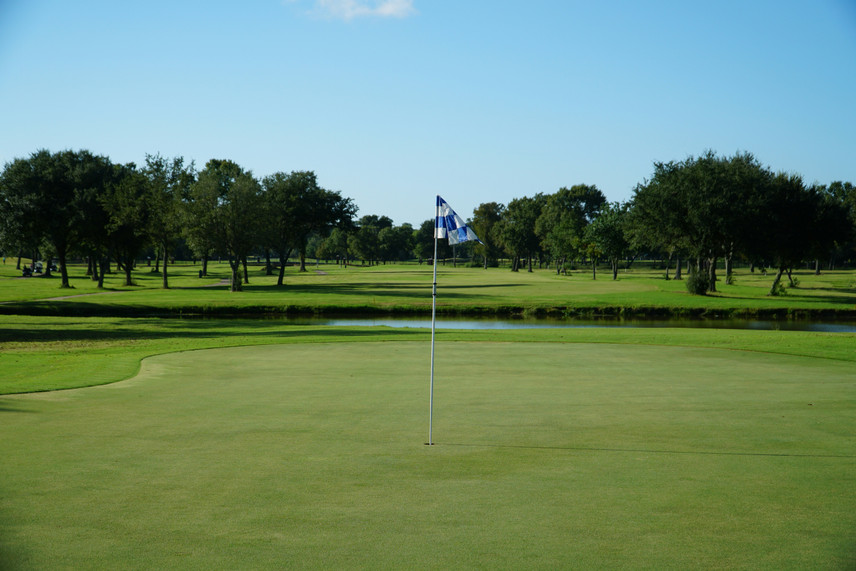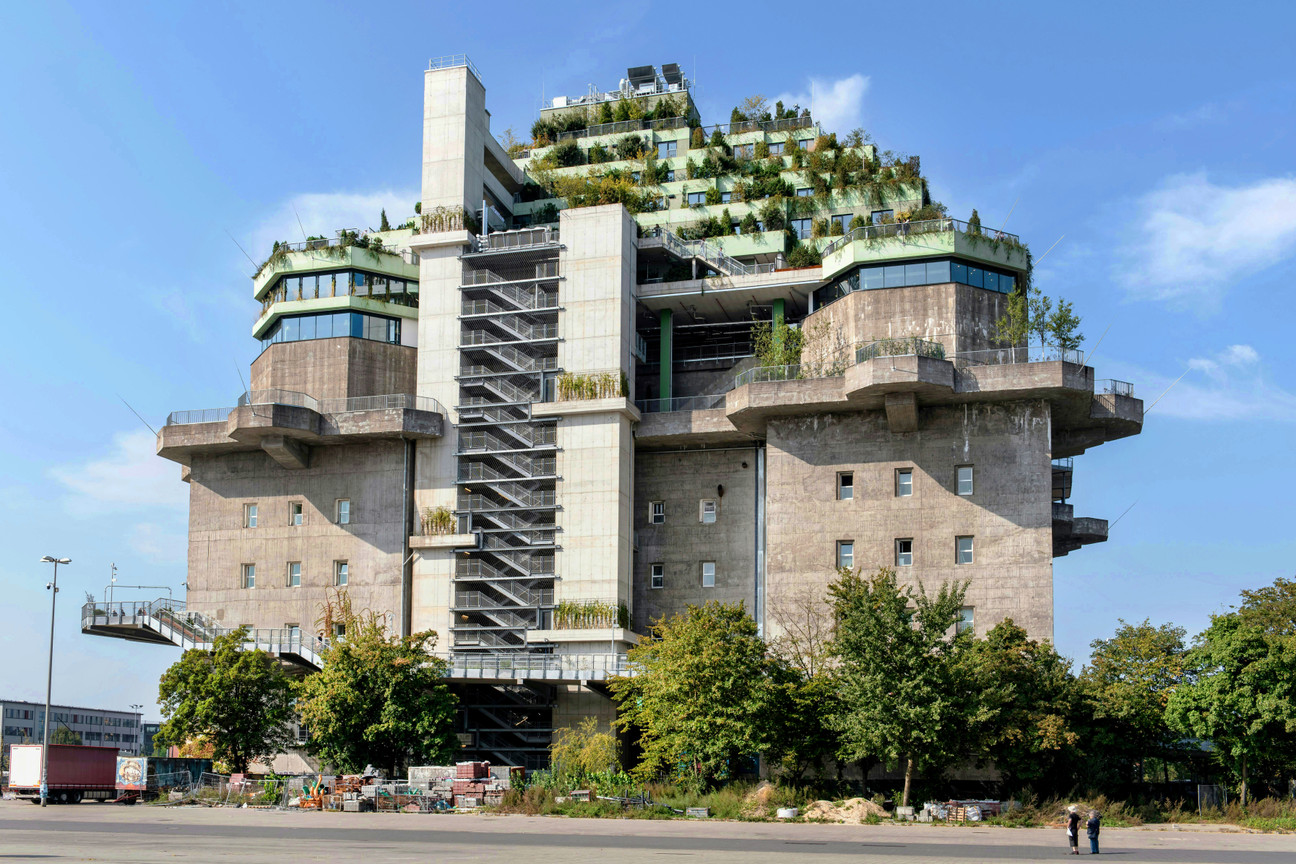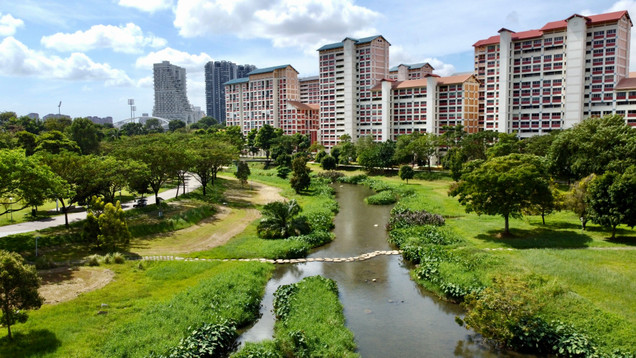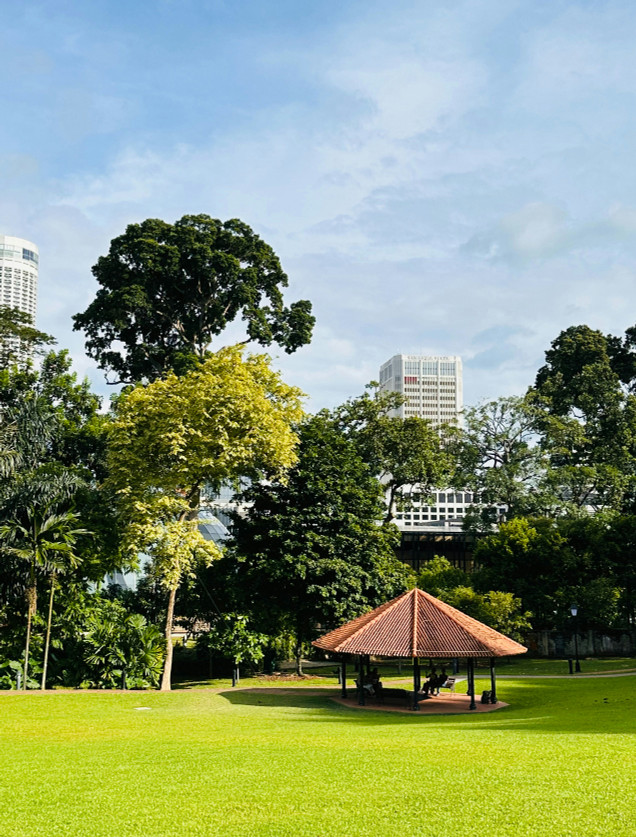© ACO
ACO: Interview with Stephan Kehren
“Many topics relating to ‘Green City’ still require a lot of missionary work.”
Stephan Kehren is Key Account Manager at ACO - but above all, he is an enthusiast when it comes to water management and how this valuable resource can be utilised sensibly. In this interview, the well-travelled specialist takes us from Singapore to Hamburg to the „Kleiner Kiel“ – right on our doorstep.
Stephan Kehren
Key Account Manager
When some people think of "Green City", they immediately think of trees in the city, while others think of mobility concepts, electrification, public transport, cycle paths, clean energy, solar panels, recycling and digitalisation. Where does the truth lie between "very simple" and "very complex" when it comes to "Green City"?
Basically, it's about all areas. At ACO, we have focussed on dealing with rainwater, but that is only a small part of all the climate adaptation measures that Green City stands for. Our cities need to be able to respond resiliently to the effects of climate change so that we can continue to have a liveable space in the future. Trees and green spaces are a city's natural air conditioning system, but they are also in strong competition with cars. As a landscape architect, I think generous greenery is of course extremely important, but we always have to take the entire infrastructure above and below ground into account when planning. Ultimately, the question is: how much greenery can and do we want to afford here?
Host City Premium Partner
The Ocean Race Europe 2025
ACO is an official ambassador for UN Sustainable Development Goal 6*
You originally come from the field of landscape architecture. What was your career like? Was there a key moment when you decided in favour of Green City development at ACO?
I studied landscape architecture in Osnabrück. Back then, the terms "sponge city" or "green city" didn't even exist. We learnt the classic subjects of civil engineering, landscape architecture and garden and park design. Of course, we also had subjects such as landscape and environmental planning, in which knowledge and methods were taught to sustainably plan and protect natural habitats, landscapes and environmental resources. However, I didn't realise the term "green city" until much later.
During my studies, I did an internship semester in the Netherlands, which was very much about water. The Dutch are "built closer to the water". There was always a bit of a joke about this: if the water level rises at some point, then the Dutch will disappear from the map at some point.
The Dutch have long been masters of water management. They have reclaimed large parts of their land from the water artificially and at great expense, and logically do not want to give it back. In addition, a considerable part of the country lies below the surface of the sea. A constantly rising sea level naturally presents an entire country and its population with extremely big challenges. I realised that the element of water plays a major role in almost every plan. I also remember our boss standing in the office one day, looking at our plans and saying: "We need a lot more trees!" At the time, the office was already known for combining urban planning and landscape architecture in an innovative way.

© Thomas Park / Unsplash
So it's a problem that can affect entire nations ..
... yes, but I had another key moment at my last employer. I remember a meeting where someone from the water authority showed us a presentation. It showed that groundwater levels were dropping due to climate change. When water becomes scarce, the supply of drinking water naturally takes top priority. This is followed by areas such as agriculture. Sports facilities or golf courses are considered to be of secondary importance in such times and may of course no longer be irrigated. Logically, this poses a real challenge for a golf course, because if it can no longer be watered, the greens burn and are no longer playable. Restoring them is not only time-consuming, but also very expensive. That was a key moment for me, when I realised that we are talking about luxury problems here, when we actually have much bigger problems in our cities due to climate change.
How did you get from the golf course to ACO?
I actually more or less stumbled across an ACO manhole cover and remembered that I had already been to ACO as a visitor shortly after my studies. Coincidentally, a position as an architectural consultant had just become available in Hamburg at the time. Things got exciting again a little later when the "Green City Solutions" division was created, where I was able to put my experience to good use.
When I started at ACO, the slogan was still "Creating the future of drainage", so it was all about drainage. Today we say: "We care for water". We no longer simply send rainwater into the sewerage system. It's about a water cycle, the ACO WaterCycle: collect, clean, hold, reuse. The "reuse" has replaced the "release". I found that really exciting. With this change, ACO has really hit the mark with me.
“A sponge city is a sponge under the city that absorbs water when there is too much coming from above and releases it again when needed if it hasn't rained for a long time.”
Stephan Kehren
It's a nice coincidence, because not everyone's own ethos and professional life coincide. You just mentioned the term "sponge city". Do Green City and sponge city mean the same thing?
In simple terms, a sponge city is a sponge under the city that absorbs water when there is too much coming from above and releases it again when needed if it hasn't rained for a long time. This relieves the pressure on the sewerage system during heavy rainfall events and the Green City can benefit from the water during water shortages. Trees are vital building blocks in our cities. They have a positive influence on our microclimate by providing a habitat for a variety of organisms and animals. They filter fine dust, bind CO₂ and release oxygen. They also cool our cities with their shade and the large quantities of water that they evaporate through their leaves. Of course, they also need optimal site conditions for this.
Is there a city or a project that has particularly inspired you?
Yes, indeed. I spent almost a year and a half living and working in Singapore, a city with five million inhabitants in an area smaller than Berlin. The planning office Dreiseitl from Überlingen was already working in Singapore at the time and was developing "Green City" projects. When I was there, I was able to see some of these landscape projects for myself. That was very impressive.
Singapore has very different rainfall patterns to us here. Some days you could set your watch by when it starts to rain. You didn't even have to leave your flat or office during this time, as the water simply came from all sides. We would probably have put sandbags in front of the doors, but the infrastructure there is of course designed for these extreme downpours. Singapore is also a very densely built-up city. Accordingly, there are large gutters and concrete channels that drain the collected water from the streets and tower blocks as quickly as possible.
“Singapore is a Green City like no other. The air quality is very good, which is not only due to the large parks, but also to the fact that the number of cars permitted is strictly limited and public transport is very well developed.”
Stephan Kehren
In the early 2000s, the Dreiseitl office was involved in the redesign of Bishan-Ang Mo Kio Park. There used to be one of these huge, linear concrete canals there. The office came up with the idea of developing a near-natural watercourse with a curved shape and integrating it into the park design. The flow velocities were reduced so that riparian vegetation could colonise the banks. In addition, large retention areas were topographically integrated into the park landscape. Today, the park is a great habitat for people and nature in the middle of a densely populated city.
Singapore is a Green City like no other. The air quality is very good, which is not only due to the large parks, but also to the fact that the number of cars permitted is strictly limited and public transport is very well developed.
As in the Netherlands, land has also been reclaimed from the water through large-scale embankments. You might think that this has created expensive building land, but instead another park has been created with the "Gardens by the Bay". It's like creating a huge park with redwood trees on the site of Hamburg's HafenCity.

© Wolfgang Weiser / Unsplash
© ACO
A nice thought: the Elbphilharmonie in the middle of a green oasis, that would be great.
Absolutely, in view of climate change, a more generous distribution of green spaces in HafenCity would be beneficial. Another option would be to add more greenery to many building façades to further improve the microclimate.
Like the Hamburg tower block, for example. ACO was also involved in this project.
The green high-rise bunker in St Pauli is a great example of how it is possible to create a green landscape even on rather difficult and exposed sites. I find such projects groundbreaking for the design of a "green city".
All the roof surfaces and façades of the bunker are generously planted. There is also a so-called green "mountain path" that winds upwards around the entire structure to a public park at the very top. There are retention boxes on all levels that collect and retain rainwater like a real sponge. If you put your ear to the downpipes on a dry day, you can hear a soft rushing of water. The water circulates there in a constant cycle. Excess rainwater is not disposed of, but cascades from level to level until it is finally stored in a large tank at the foot of the bunker. From there, it is reused to irrigate the plants. Here too, the greenery contributes to a better urban climate in Hamburg. This spring, by the way, the entire vegetation has literally exploded.
For Hamburg, the Elphi and now the green high bunker have the so-called Bilbao effect: the buildings have a radiance that extends far beyond the city and attract many people from all over the world. There is also a very exciting area in Kiel that was designed by ACO. It is located between Kleinem Kiel and the boat harbour and is a talking point. How does a project like this actually come about?
It starts, for example, with a client with a crazy idea who calls in a planner. Together they sketch out their ideas. In most cases, investors are also needed who are brave enough to invest in such flagship projects. Sometimes we are already present at these initial meetings and can contribute our experience directly. As a rule, however, we are only called in later by a planner or landscape architect when specific issues, such as drainage, need to be clarified. In some projects, it is often the details that we are called in to advise on, for example with the "Little Keel": Where can the water be drained? And where does it flow to?
© ACO
At the same time, the technology should be as inconspicuous as possible. It's basically like on a stage: most of the products we sell disappear into the ground, i.e. backstage. I want to see the beautiful paving, the beautiful trees and all the greenery, and at the same time we have to make sure that everything works well underground. In most cases, such tasks can be solved with products that have already been developed. But in the "Green City" sector in particular, it happens time and again that we pursue new approaches, often initially as a customised solution for a specific project. If these solutions prove successful and are frequently requested, new products can be developed from them, which we later produce and sell in series.
“However, we can use our projects to show that working solutions already exist today. This allows us to take away the worries of decision-makers as to whether everything will work smoothly in the end.”
Stephan Kehren
Political decisions by cities or municipalities are often the starting point for a project. In 2023, for example, the city parliament in Frankfurt decided to plant 10,000 trees by 2030. Of course, this is also at the expense of roadways and car parks – and some residents are annoyed by this. What would ACO advise the city of Frankfurt to do?
As a rule, it is urban planners who develop overall solutions for the "Green City". Where possible, we try to get involved in advance or proactively approach decision-makers to draw attention to our systems and solutions. We also offer various platforms for dialogue, such as our online academy. I recently had the opportunity for a local authority to invite me to a working group made up of civil engineering, road construction, green space authorities, etc., where I was able to present our systems. That was ideal for me, of course, as all the contacts were sitting at the same table, but in reality that usually happens far too rarely. Many topics relating to "Green City" still require a lot of "missionary work". However, we can use our projects to show that working solutions already exist today. This allows us to take away the worries of decision-makers as to whether everything will work smoothly in the end. After all, nobody wants to feel like a guinea pig. It is particularly important to us to initiate change and overcome the attitude of "we've always done it this way". It is precisely this mindset that we want to leave behind. It's time to get things moving – other countries have long since shown us how it can be done.

© Joshua Tsu / Unsplash

© Alessio Patron / Unsplash
“Climate adaptation measures are necessary to ensure that our cities remain liveable in the future. However, they will require investment – and this is where politics is particularly needed.”
Stephan Kehren
People are quick to say "politics", but in the end you're always talking to people. Even if you get them emotionally involved, in the end it's the rational foundation, the expertise, that makes the difference. ACO seems to have a lot to offer in this respect.
Yes, we have a lot to offer, but we also need to reach all those who make decisions in projects. Especially when it comes to sustainable, climate-resilient construction, there is often no way around politics. Climate adaptation measures are necessary to ensure that our cities remain liveable in the future. However, they will require investment – and this is where politics is particularly needed. We have to be very convincing at this point.
In addition to our online academy, we offer numerous on-site events throughout Germany, such as the ACO Rain Worlds. We see this as a platform where we invite planners, project participants from cities and municipalities as well as politicians to exchange ideas. This is very well received, because everyone is aware that they will have to deal with these issues sooner or later anyway. Although it is clear that the topic is gaining in importance, many people do not yet know exactly what the term "green city" means. This is exactly where we come in.
We also present our own solutions here, which are only one part of an overall solution, but this always leads to a good dialogue. Even more important, however, is what the other participants bring to the table: their perspectives, experiences and requirements. Following such events, we regularly receive numerous enquiries from a wide variety of sectors. This gives us the opportunity to get involved in specific projects.
On the one hand, ACO's technology should remain backstage; people don't see the physical products that are installed. On the other hand, of course, there needs to be a certain level of publicity for the expertise. Is it always about making the invisible visible for you?
That's absolutely the case! When I walk through the city, I often unconsciously look down to see what has been built there. That sometimes annoys my girlfriend and then she says: "Stop thinking about work all the time!" But what you see on the surface is of course only a small part of what ACO is all about. Due to our history, we are often still reduced to the classic drainage channel. But many of our products disappear completely underground. To understand how an infiltration trench works, for example, we need to visualise these solutions and explain why they are so important.
A former colleague of mine once said: "It's hard to sell clean water when it's already clean." I think that describes our work pretty well. As long as everything still seems to work as usual, it is difficult to communicate solutions for climate adaptation. The real problems lie in the future and are still too far away for many people to really feel them today. But we have to act today! It is very much about making the invisible visible, talking about it, informing and sensitising people.
© ACO
I recently gave a presentation on the subject of rainwater management at sports facilities. Among other things, it was about the possibility of using collected rainwater to irrigate sports pitches. A pitch with an area of over 7,000 square metres requires almost three million litres of water over the course of the season. If you only look at the costs, an infiltration system for pure irrigation would of course not be worthwhile, as drinking water is very cheap in Germany. However, if it is planned to retain or infiltrate rainwater on the property anyway, dual utilisation could make sense. Even if this does not immediately save 100 per cent drinking water, the collected rainwater can be a valuable alternative during dry periods - especially if irrigation is prohibited. In the best case scenario, such a system is even subsidised. This is exactly what I mean by "making visible". We need to show such individual and practical examples so that the respective target group can better categorise their options.
“You have to be a real stand-up guy.”
Stephan Kehren
The striking visualisation is a good approach. The Ocean Race Europe, in which ACO is on board as a premium partner of the Kiel starting harbour, takes a similar approach. The race is a platform for drawing attention to marine conservation, sustainability and climate change. ACO is also taking part in a summit. But what does it do to you personally to always be a representative of the invisible, to always make it visible? Do you need a special attitude for this?
The companies we work with all know us very well, of course. We are one of the world's leading WaterTech companies. The exciting thing is actually the target groups that we want to reach in the future and who may not even know ACO because they simply haven't had any contact with us before. You can now read about climate change everywhere, which of course supports the whole thing. Terms such as smart city or green city are now also being used very often. To answer your question: you have to be a real stand-up guy. There are days when you come home frustrated. That's part of it. The important thing is that after the first coffee the next morning, the wind is back in your sails. I think that's the mentality you need to have.
*ACO – Ambassador of SDG 6
Water has an enormous impact on the quality of life of the world's population. This is why the United Nations (UN) has defined the improvement of water quality as one of the 17 Sustainable Development Goals in its 2030 Agenda. All UN member states are to achieve the desired changes by 2030.
With its holistic water-related business model, ACO contributes in particular to the realisation of the sixth (Clean Water and Sanitation), ninth (Industry, Innovation and Infrastructure) and eleventh (Sustainable Cities and Communities) UN Sustainable Development Goals.
On the occasion of the UNESCO anniversary year 2025, ACO was selected as an ambassador for the sixth UN Sustainable Development Goal.
© ACO – Interview: Ralf Löwe / sonofasailor.de
Acquire article rights
